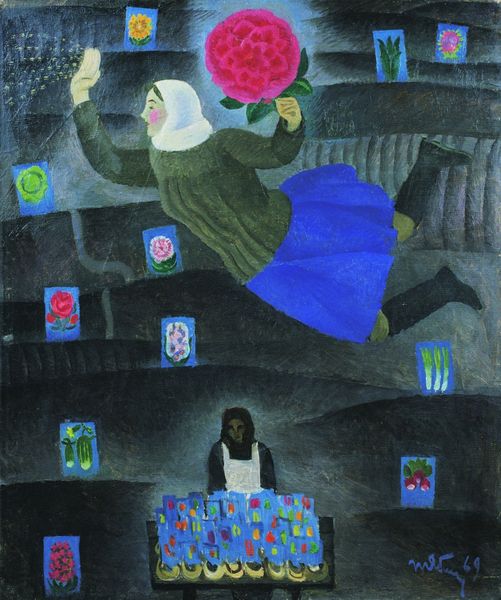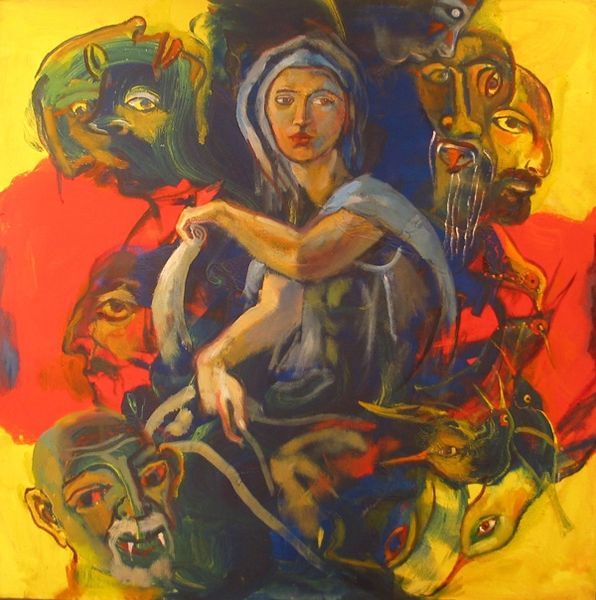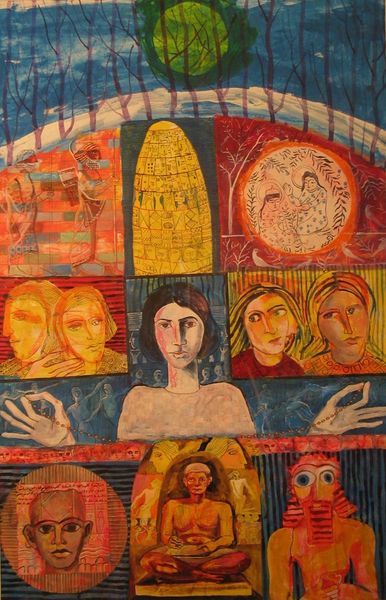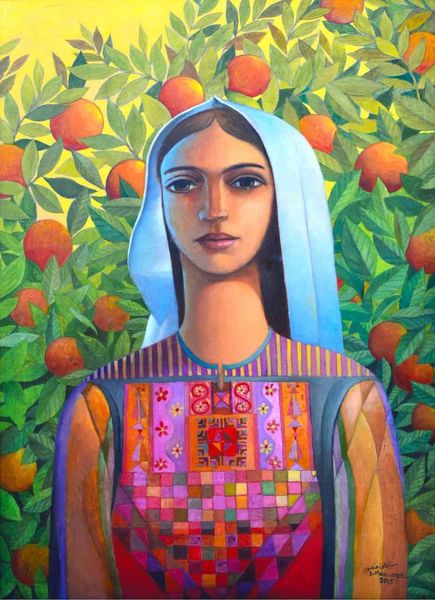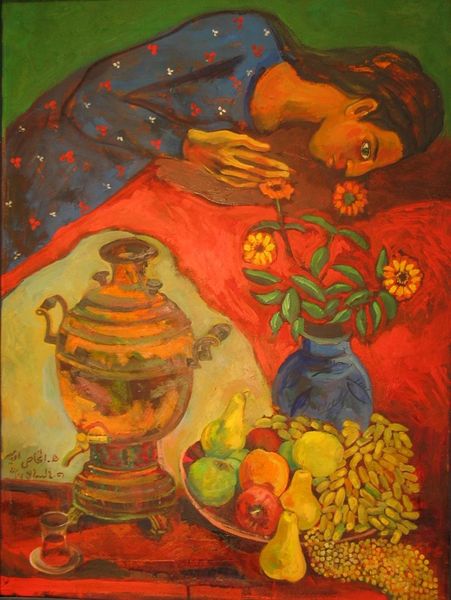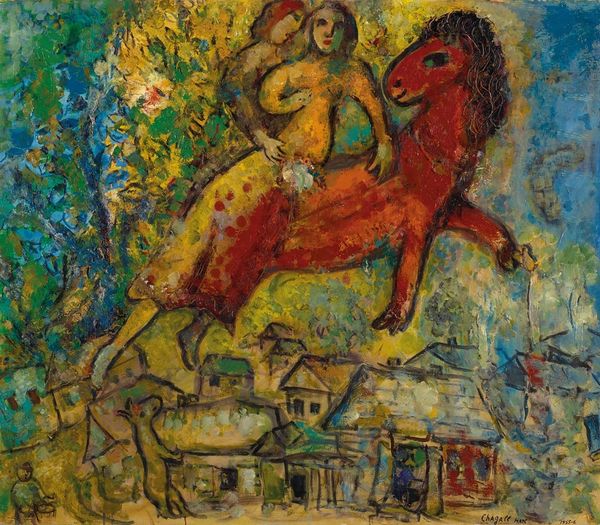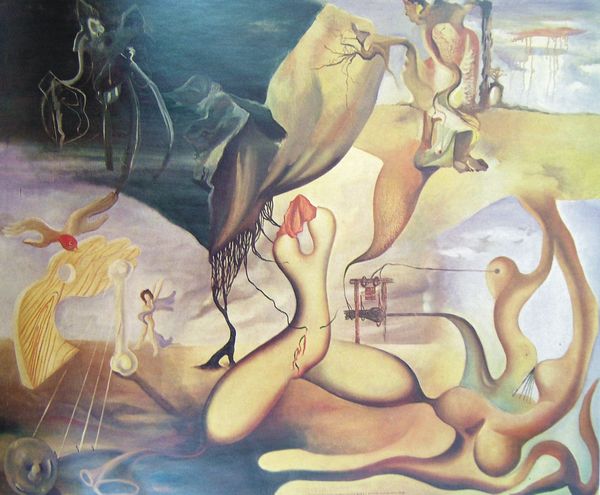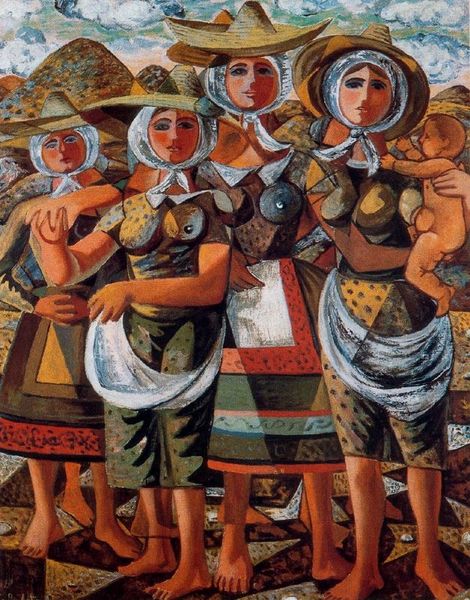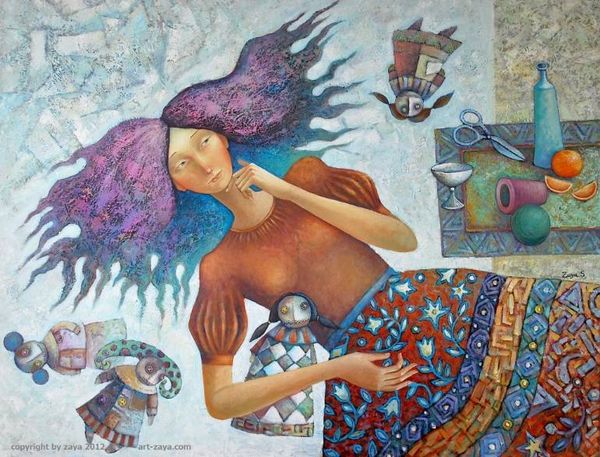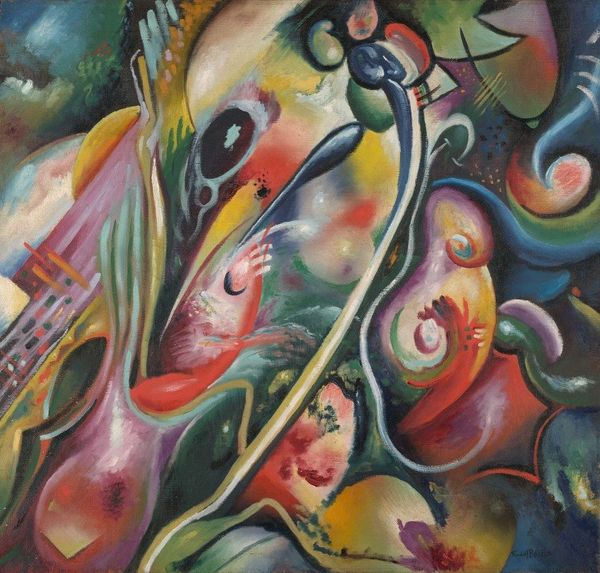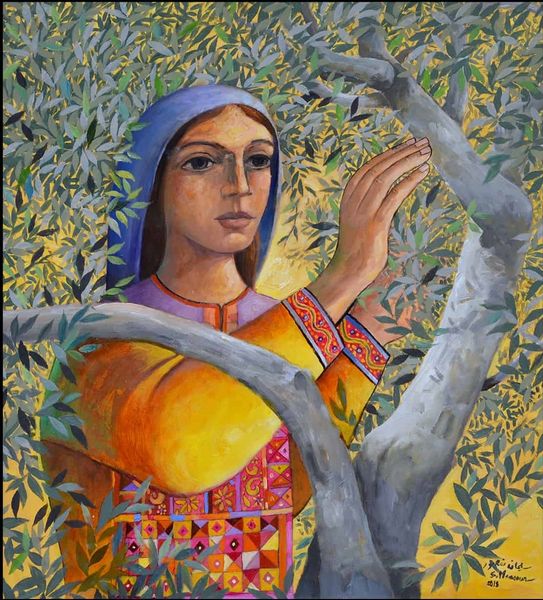
painting, watercolor
#
gouache
#
painting
#
landscape
#
figuration
#
watercolor
#
genre-painting
#
modernism
#
watercolor
Copyright: Sliman Mansour,Fair Use
Curator: Good morning, I’m here with the formalist art critic, for a fresh look at a recent acquisition. Sliman Mansour's, *The Village Awakens*, painted in 1988. What is your first impression of this work? Editor: Stark, but with this weird hopeful air— like a muted promise being whispered. There’s this massive figure in the background looming over a tightly knit group of people, creating an image that’s equally domineering and protective. Curator: Indeed, there’s a remarkable layering of figures and actions, interwoven in a space that defies traditional perspective. Notice the architectural forms; houses that seem almost like faces, and then observe how that large female figure almost appears as if built out of the landscape and the collective people below. It makes you wonder about themes of collective identity... Editor: It’s almost a flattened hierarchy, where the central figure, massive as she is, seems integrated, almost trapped in the design rather than simply positioned. This is enhanced through his use of earth tones and the textural quality of what I understand is a watercolor medium... a conscious aesthetic constraint perhaps mirroring political realities? Curator: Mansour worked consciously within what was available; utilizing the humble watercolor to forge, with deliberate intensity, images deeply rooted in Palestinian cultural identity. He saw the village, the *fellah*, as embodiments of cultural resistance and preservation against occupation and displacement. That maternal figure seems to embody all these ideas. It becomes incredibly powerful and really transcends the limits often attributed to that medium. Editor: The semiotics are indeed dense—the colors evoke a raw connection to the earth, and that dominating central figure almost a modern-day iconic representation of the displaced homeland, carrying the collective struggle and spirit of her people within. Do you think her static appearance signifies a resigned stance, or perhaps an enduring stance? Curator: Her gaze is undeniably steady, but she does also represent the generations whose daily labor ensures continuity; not necessarily stillness but the enduring reality for many Palestinians and those are embedded through color and material. Editor: Right— it's a striking piece of layered meaning through its symbolic density, and ultimately challenges viewers to engage with not just aesthetics, but cultural and socio-political questions around national identity. It’s truly a work that resonates on many levels.
Comments
No comments
Be the first to comment and join the conversation on the ultimate creative platform.
